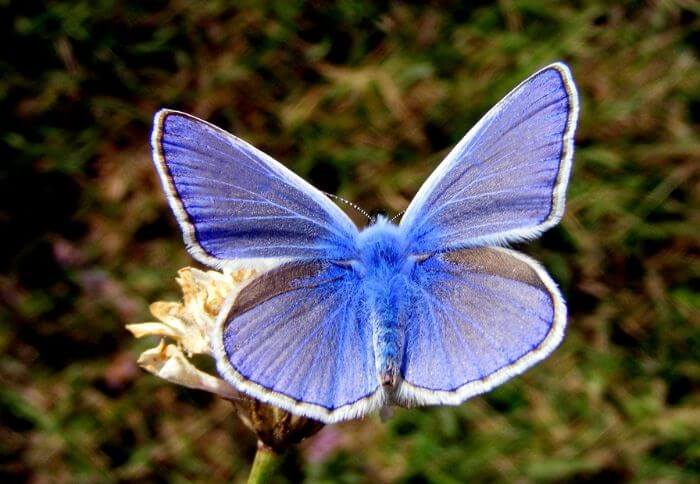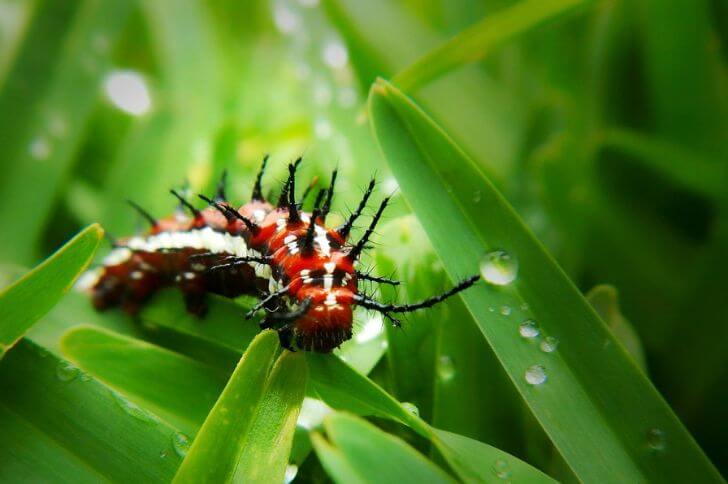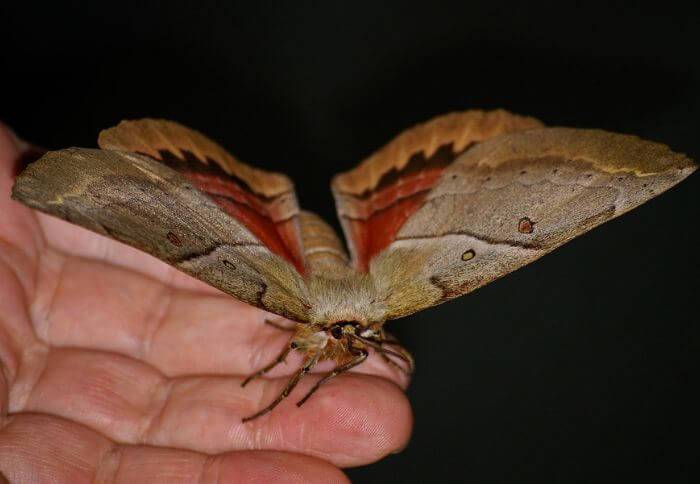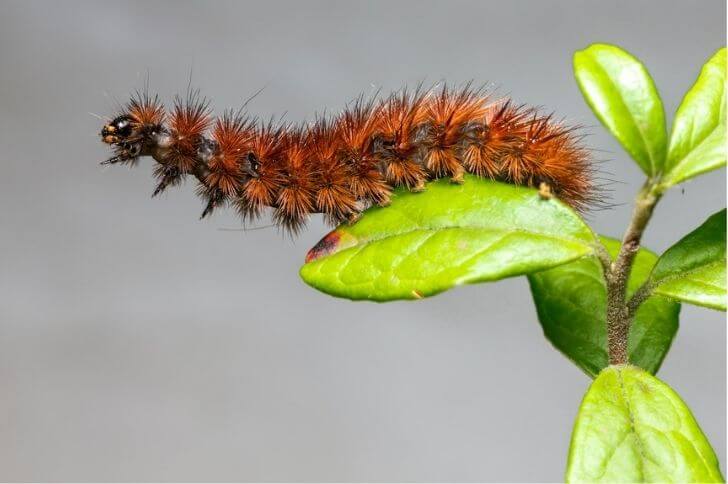Large Moths in Pennsylvania (7 Common Species)
From the elusive Luna Moth with its ethereal green wings spanning up to four inches across, to the striking Cecropia Moth boasting red and brown hues reminiscent of autumn foliage, Pennsylvania’s moth population is as diverse as it is mesmerizing.
With over 200 species documented in this region alone, each moth brings its own unique charm and beauty to the nocturnal landscape.
Prepare to be captivated by these winged wonders as we delve into their characteristics, behaviors, and habitats in this exploration of the types of large moths in Pennsylvania.
List of large moths in Pennsylvania
1. Cecropia moth
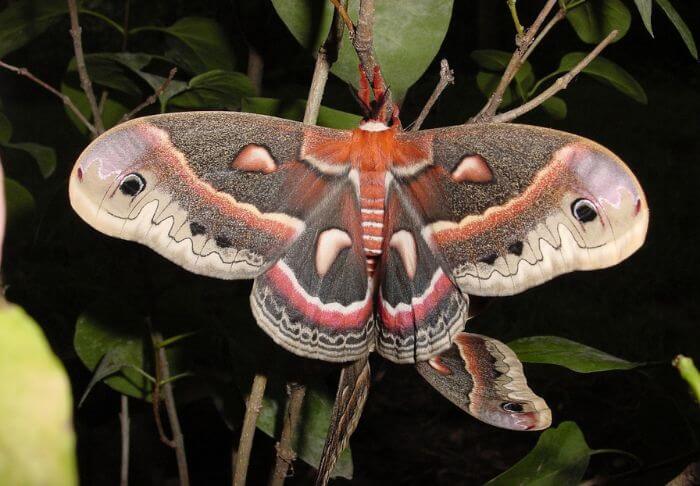
The Cecropia moth is a fascinating creature that graces the skies of Pennsylvania with its magnificent presence.
With a wingspan reaching up to six inches, this giant moth captures the attention of anyone fortunate enough to witness its graceful flight.
What truly sets the Cecropia moth apart is its striking appearance, featuring vibrant red and brown patterns on its wings that make it a standout beauty in the world of moths.
As one of the largest moth species in North America, the Cecropia moth goes through a remarkable transformation from egg to larva to pupa before emerging as an adult.
Its brief but spectacular lifespan revolves around finding a mate and reproducing, making every encounter with this majestic creature all the more precious.
Despite facing threats from habitat loss and predators, these gentle giants continue to enchant us with their awe-inspiring beauty and important role in our ecosystem.
In Pennsylvania, spotting a Cecropia moth in your backyard or garden can be a rare yet unforgettable experience that serves as a reminder of nature’s wonders.
As nocturnal creatures, these moths are often elusive during the day but may grace us with their presence under moonlit skies.
By appreciating and protecting these captivating insects, we can ensure that future generations will have the opportunity to marvel at their splendor and importance in our natural world.
2. Luna moth
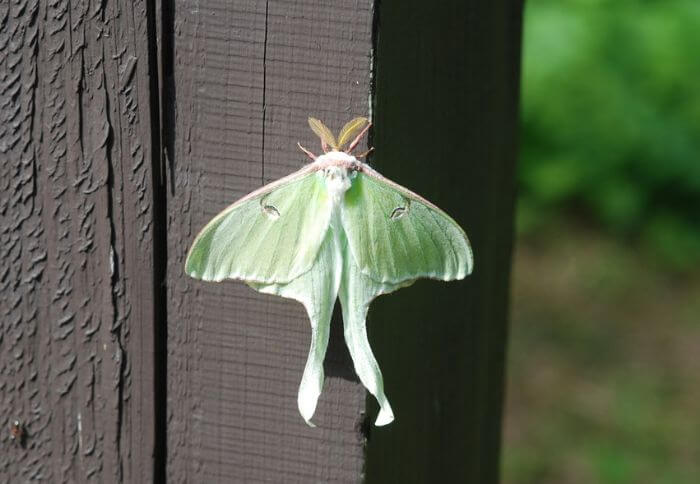
Luna moths, with their ethereal lime green wings and long graceful tails, are a sight to behold in the Pennsylvania night.
As one of the largest moths in North America, it captivates observers with its striking appearance and elusive nature.
This magnificent creature emerges from its cocoon as a symbol of transformation and renewal, reminding us of the beauty of metamorphosis in nature.
Despite their stunning appearance, these large moths in Pennsylvania have a short lifespan once they reach adulthood.
Their primary goal during this brief period is to find a mate and reproduce before fading away.
This urgency adds an air of mystery and urgency to their presence, making each encounter with these majestic creatures even more precious.
It’s no wonder that spotting a Luna moth fluttering through the darkness can evoke feelings of wonder and awe at the fleeting beauty of nature’s creations.
3. Ash Sphinx
One of the most intriguing moth species found in the forests of Pennsylvania is the Ash Sphinx.
With its large wingspan and distinct markings, this majestic creature captures the attention of any observer lucky enough to witness it in flight.
The Ash Sphinx is known for its swift and agile movements, darting through the trees with remarkable grace.
What sets the Ash Sphinx apart from other moths in Pennsylvania is its unique coloration, blending shades of gray and brown to create a striking camouflage against tree bark.
This adaptive feature allows the Ash Sphinx to evade predators and remain hidden during daylight hours.
Despite its size, this elusive moth has mastered the art of stealth and survival in a challenging environment like Pennsylvania’s dense woodlands.
Related Read: large moths of Florida
4. Five-spotted Hawk Moth
The five-spotted hawk moth, scientifically known name Manduca quinquemaculata, is a fascinating insect found in Pennsylvania.
With wings spanning up to four inches, this large moth is easily identifiable by the five distinct spots on its hindwings.
In addition to their impressive size and markings, these moths are also known for their swift and agile flying abilities.
One of the most intriguing aspects of the five-spotted hawk moth is its unique feeding habits. As caterpillars, they are voracious eaters and are especially drawn to plants like tomatoes and tobacco.
This behavior has earned them the nickname tomato hornworm. Despite their reputation as pests in agriculture, these moths play a crucial role in pollination and contribute to the ecosystem’s biodiversity.
Observing a five-spotted hawk moth in action is truly a remarkable experience. Their elegant flight patterns and intricate wing designs make them a captivating sight in Pennsylvania’s natural landscape.
5. Tersa sphinx moth
Known for their sleek bodies and intricate wing patterns, Tersa Sphinx Moths are a sight to behold as they hover gracefully in search of nectar.
What sets this huge Pennsylvania moth apart is its unique ability to blend into its surroundings, making it a master of camouflage in the lush greenery of Pennsylvania’s landscapes.
As dusk falls and the air cools, the Tersa Sphinx Moth emerges from its daytime hiding spot to begin its mesmerizing nocturnal activities.
With a wingspan that can reach up to four inches, this impressive moth is a true marvel of nature.
Its delicate fluttering and swift movements create an enchanting spectacle against the backdrop of evening twilight, making it a symbol of beauty and mystery in Pennsylvania’s biodiversity.
Intriguingly, despite their large size and striking appearance, these big Pennsylvania Moths are often overlooked by casual observers.
However, for those who take the time to appreciate their elegance and grace, these majestic creatures reveal themselves as wonders worth celebrating in Pennsylvania’s rich ecosystem.
6. Pandora sphinx moth
Pandora sphinx moth, with its large wingspan and striking colors, is a mesmerizing insect that graces the skies of Pennsylvania.
Often mistaken for a butterfly due to its delicate appearance, this moth is a master of disguise, blending in perfectly with its surroundings. The intricate patterns on its wings resemble abstract artwork, showcasing the beauty of nature’s design.
What sets the Pandora sphinx moth apart from other species is its unique feeding behavior.
With a long proboscis specially adapted for reaching deep into flowers, this moth plays a crucial role in pollination.
By sipping nectar from various plants, it contributes to the ecosystem’s balance and diversity.
7. Achemon sphinx
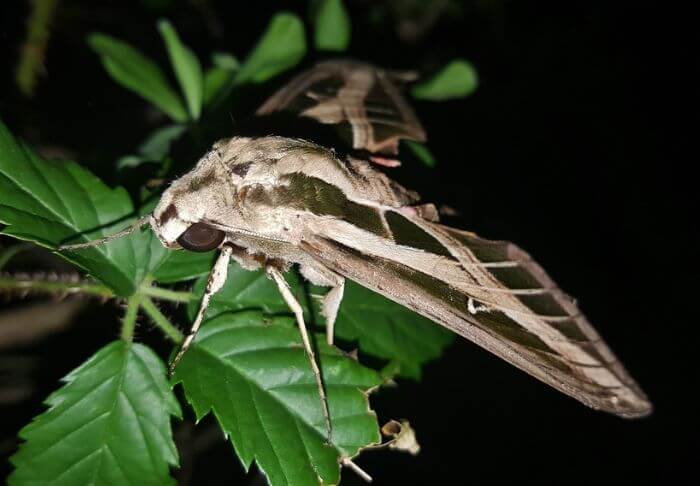
Scientifically called theEumorpha achemon, the achemon sphinx is a strikingly beautiful moth species found in Pennsylvania.
With its large wingspan and intricate patterns of browns and tans, this moth is a sight to behold in the wild.
One interesting feature of the Achemon sphinx is its unique resting position, where it holds its wings in a way that resembles dead leaves hanging from branches, providing excellent camouflage.
One fascinating characteristic of this big moth in Pennsylvania is its life cycle. Beginning as larvae that feed on grape leaves and Virginia creeper plants, these moths undergo metamorphosis into pupae before emerging as stunning adult moths.
This transformation process highlights the incredible resilience and adaptability of these creatures in their natural habitat.
8. Imperial moth
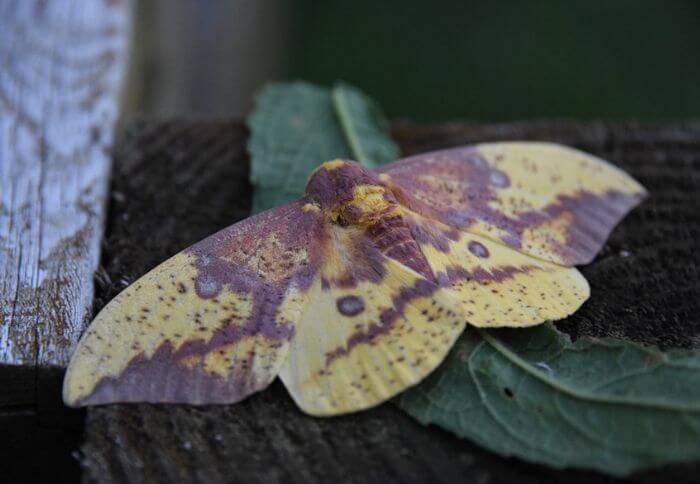
As dusk descends upon the Pennsylvania countryside, a magnificent creature takes flight under the veil of darkness – the Imperial moth.
With its wings spanning up to seven inches, this impressive moth is a sight to behold as it flutters gracefully through the night sky.
The intricate patterns on its wings, resembling an artist’s masterpiece, add a touch of regal elegance to its appearance.
Despite its grandeur, the Imperial moth leads a humble life focused on survival and reproduction.
It relies on its keen sense of smell to locate mates from afar, engaging in a delicate courtship dance that culminates in the continuation of its species.
Its larvae feed on a variety of host plants, playing an essential role in maintaining ecological balance within their habitats.
Yet, beyond its biological significance lies a creature steeped in symbolism and mystique.
Some cultures view the Imperial moth as a symbol of transformation and rebirth, with its metamorphosis from caterpillar to majestic adult evoking themes of growth and renewal.
In essence, the Imperial moth embodies both beauty and resilience, serving as a reminder of nature’s enduring power and grace.
Final Thoughts:
Pennsylvania is home to a diverse array of large moth species, each with its own unique characteristics and habits.
From the majestic Luna moth to the impressive Cecropia moth, these insects play an important role in the state’s ecosystem.
By learning more about these fascinating creatures, we can gain a greater appreciation for the natural world around us.
Whether you are a seasoned moth enthusiast or simply curious about the wildlife in Pennsylvania, taking the time to observe and appreciate these magnificent creatures can be a rewarding experience.
So next time you find yourself outdoors at night, take a moment to look up and appreciate the beauty of Pennsylvania’s large moths.
source:

Passionate animal enthusiast and skilled writer with a flair for captivating storytelling. With over five years of experience, I have crafted engaging content that sheds light on the fascinating world of animals.
Through my articles, blog posts, and social media campaigns, I strive to raise awareness about conservation efforts and promote a deeper understanding of the natural world.
